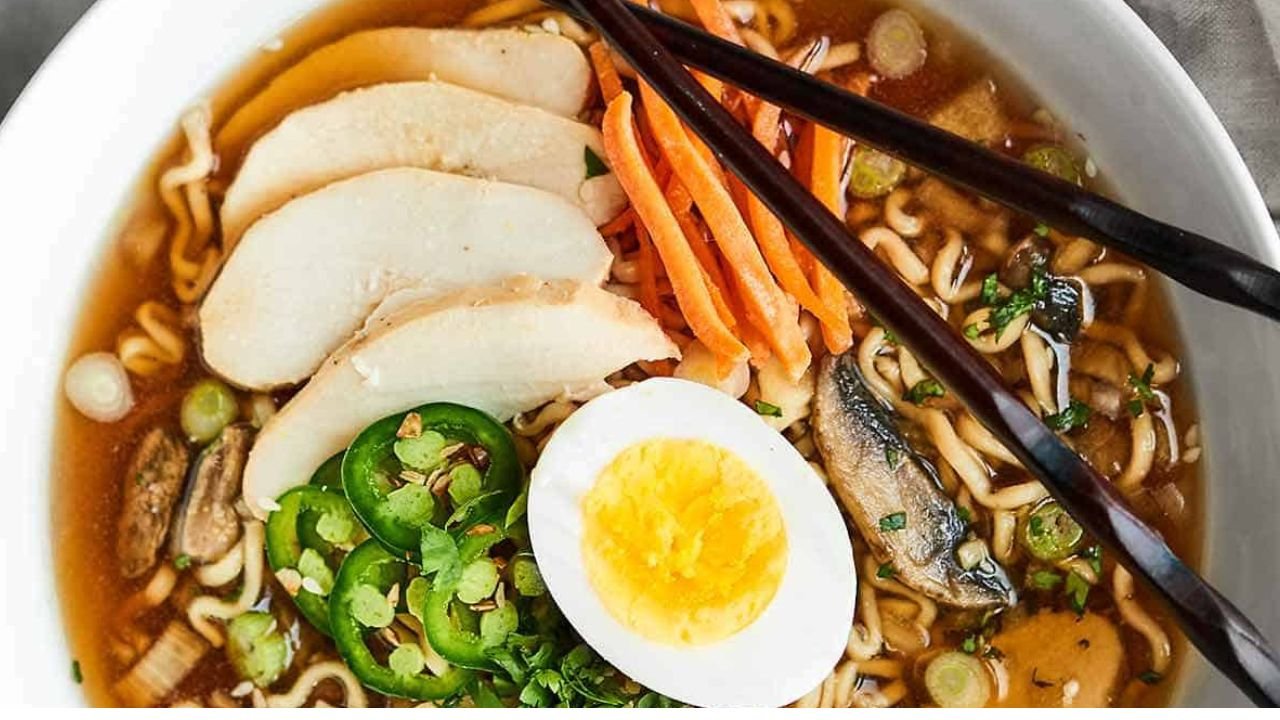Introduction
Ramen is one of Japan’s most iconic dishes, cherished worldwide for its rich, flavorful broth, tender noodles, and diverse toppings. Traditionally, ramen involves hours of slow-simmering broths and intricate preparations, but with modern techniques and quality ingredients, you can create a satisfying, restaurant-quality bowl at home in under an hour.
This guide will walk you through everything you need to know to craft Quick Homemade Ramen—delicious, comforting, and customizable. Whether you’re a busy professional, a student, or a home cook craving authentic flavor without the lengthy process, this comprehensive tutorial will empower you to master ramen in your own kitchen.
A Brief History of Ramen
Though ramen is widely associated with Japan, its origins are complex, influenced by Chinese noodle dishes and adapted over centuries. The modern incarnation of ramen emerged in post-World War II Japan, evolving into countless regional styles.
Traditional ramen involves slow-cooked broths—pork (tonkotsu), chicken, seafood, or vegetable-based—and fresh, hand-pulled noodles. However, in recent decades, instant ramen has gained global popularity, introducing millions to the flavor profile with convenience.
The beauty of homemade ramen lies in customization, fresh ingredients, and control over flavors, making it a fun and rewarding cooking project.
Core Components of Ramen
A typical bowl of ramen consists of four main elements:
- Broth: The soul of ramen. It’s rich, flavorful, and forms the base.
- Noodles: Usually wheat-based, with varying thicknesses and textures.
- Toppings: Meat, eggs, vegetables, and other garnishes.
- Seasonings & Oils: Soy sauce, miso, sesame oil, chili, and aromatic oils to enhance flavor.
Let’s explore each component in detail, focusing on quick, practical methods to assemble a delicious bowl.
1. Broth: The Heart of Ramen
Creating a flavorful broth is the most time-consuming part of traditional ramen. However, for quick homemade ramen, you can use shortcuts:
Types of Broth for Quick Ramen
- Instant or Store-bought Broth: Use high-quality chicken, beef, or vegetable broth as a base.
- Flavor Enhancers: Add miso paste, soy sauce, or sesame oil to boost flavor.
- Quick Simmered Broth: Combine broth with aromatics and seasonings, simmer for 10-15 minutes for depth.
Quick Broth Ideas
- Miso Broth: Mix broth with miso paste and a splash of soy sauce; simmer briefly.
- Shoyu (Soy Sauce) Broth: Use chicken or vegetable broth, add soy sauce, garlic, ginger, and sesame oil.
- Tonkotsu-Inspired Broth: Use chicken broth with added garlic, ginger, and a touch of miso for creaminess.
Shortcut Tips
- Use concentrated broth cubes or powders if desired, but choose natural, low-sodium options.
- Incorporate aromatics like garlic, ginger, scallions, or dried shiitake mushrooms for added depth.
- Finish with a drizzle of sesame oil or chili oil to add aroma and spice.
2. Noodles: The Backbone of Ramen
While traditional ramen uses fresh, hand-pulled or specialized noodles, you can use:
- Instant Ramen Noodles: Widely available and quick to cook. Look for high-quality brands without artificial flavors.
- Asian Wheat Noodles: Fresh or dried, such as udon, soba, or Chinese wheat noodles.
- Spaghetti or other pasta: For an even quicker, fusion-style version, though slightly less authentic.
Tips for Perfect Noodles
- Cook noodles al dente according to package instructions.
- Rinse briefly with cold water to stop cooking and remove excess starch.
- Toss noodles in a little sesame oil or soy sauce for flavor and to prevent sticking.
3. Toppings: Elevating Your Ramen
Toppings are what make ramen exciting and customizable. Here are popular options suitable for quick ramen:
- Eggs: Soft-boiled, marinated, or poached.
- Meat: Sliced cooked chicken, pork, or beef; pre-cooked and sliced thin.
- Vegetables: Green onions, bok choy, spinach, corn, bamboo shoots, bean sprouts, mushrooms.
- Other: Nori (seaweed), chili oil, sesame seeds, pickled ginger, fish cakes.
Quick Topping Prep
- Use pre-cooked meats or deli slices.
- Quickly sauté vegetables or use pre-washed greens.
- Soft-boiled eggs can be prepared in advance and kept refrigerated.
4. Seasonings & Oils
Enhance flavor with:
- Soy sauce
- Miso paste
- Sesame oil
- Chili oil or sriracha
- Rice vinegar
- Garlic and ginger (fresh or powdered)
Step-by-Step Guide to Making Quick Homemade Ramen
Ingredients (For 2 Servings)
- 4 packs of instant ramen noodles (preferably with flavor packets, but discard and season yourself)
- 4 cups chicken or vegetable broth
- 2 tablespoons soy sauce
- 1 tablespoon miso paste (optional)
- 1 teaspoon sesame oil
- 2 cloves garlic, minced
- 1-inch piece ginger, sliced
- 2 soft-boiled eggs (see instructions below)
- Cooked chicken or pork slices (pre-cooked or deli slices)
- Green onions, sliced
- Corn kernels or bamboo shoots (canned or frozen)
- Nori sheets, cut into strips
- Chili oil or sriracha (optional)
- Additional vegetables (spinach, bean sprouts, mushrooms)
1. Prepare the Broth
- In a pot, combine broth, soy sauce, miso paste (if using), garlic, ginger, and sesame oil.
- Bring to a simmer over medium heat.
- Let simmer for 10-15 minutes to meld flavors.
- Taste and adjust seasoning—add more soy sauce or salt if needed.
2. Cook the Noodles
- In a separate pot, cook ramen noodles according to package instructions—about 3-4 minutes.
- Drain and rinse briefly with cold water.
- Toss with a tiny bit of sesame oil or soy sauce to prevent sticking.
3. Prepare the Eggs
- Soft-boiled eggs: Bring water to a boil, gently add eggs, cook for 6-7 minutes for runny yolks, then transfer to an ice bath. Peel carefully and halve.
4. Assemble the Ramen
- Divide cooked noodles into bowls.
- Ladle hot broth over noodles.
- Top with sliced meat, soft-boiled eggs, green onions, corn or bamboo shoots, and nori.
- Drizzle with chili oil or sriracha if desired.
- Garnish with additional green onions or sesame seeds.
5. Serve Immediately
- Serve hot, with optional condiments like pickled ginger or additional chili oil.
Tips for Enhancing Your Quick Ramen
- Use quality ingredients: Fresh garlic, ginger, and good broth make a big difference.
- Pre-cooked toppings: Keep sliced meats, boiled eggs, and frozen vegetables ready to speed up assembly.
- Customize: Feel free to add mushrooms, spinach, bean sprouts, or even tofu.
- Layer flavors: Add a splash of rice vinegar or a dash of fish sauce for complexity.
- Spice it up: Use chili oil, sriracha, or freshly sliced chilies.
Variations of Quick Ramen
1. Vegan Ramen
- Use vegetable broth, miso, and soy sauce.
- Toppings: tofu, mushrooms, spinach, corn, green onions, nori.
2. Spicy Ramen
- Add gochujang (Korean chili paste) or chili flakes.
- Use spicy sesame oil or sriracha.
3. Seafood Ramen
- Add cooked shrimp, scallops, or fish cakes.
- Use fish broth or add a splash of soy sauce for umami.
4. Tonkotsu-Style (Pork) Ramen
- Use pre-cooked pork belly slices.
- Add pork broth concentrate if available for richness.
Making It Even Quicker: Tips & Hacks
- Use instant ramen noodles with flavor packets, but enhance them with fresh ingredients.
- Prepare toppings in advance—hard-boiled eggs, sliced meats, and chopped vegetables.
- Use store-bought broth or concentrated broth powders.
- Keep a stash of frozen greens and pre-cooked proteins for fast assembly.
Final Thoughts
Mastering Quick Homemade Ramen is about balancing flavor, speed, and customization. While traditional ramen involves slow cooking and meticulous technique, you can achieve a satisfying, flavorful bowl with just a few ingredients and smart shortcuts.
Remember, the key is to use quality broth, fresh toppings, and a good balance of seasonings. With a little practice, you’ll be able to whip up comforting bowls of ramen in under 30 minutes—perfect for busy weeknights or when craving something warm and savory.
Additional Resources
- Ramen Broth Tips: Deepen flavor with roasted bones or miso fermentation.
- Homemade Noodles: For advanced cooks, try making your own noodles for even more authentic flavor.
- Regional Variations: Explore different styles like Sapporo, Hakata, or Tokyo-style ramen.










